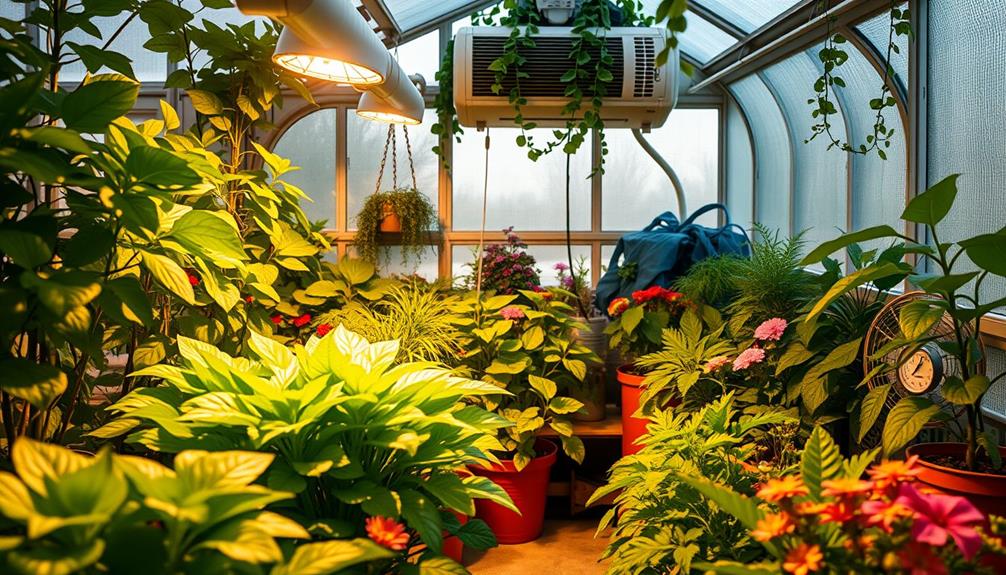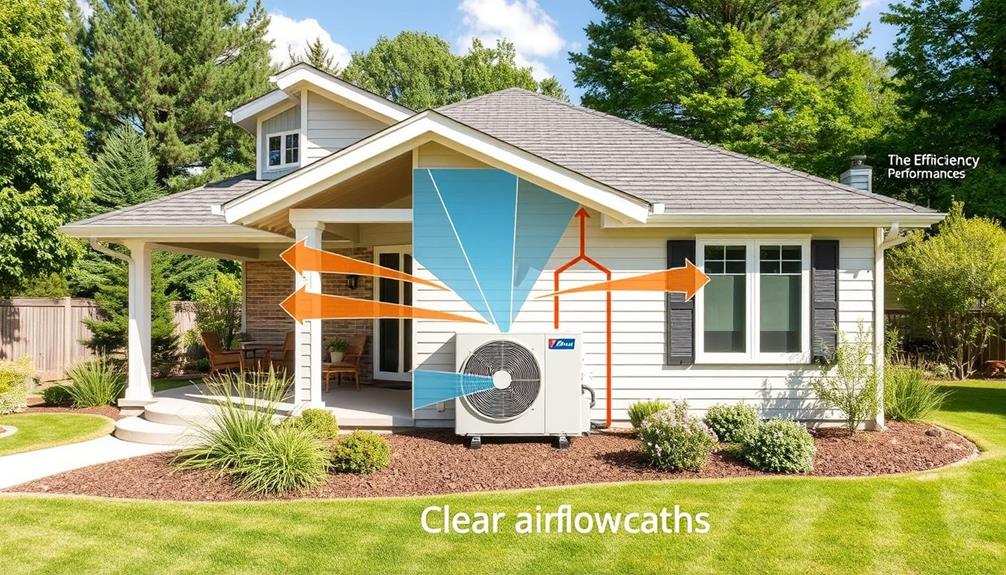Everyone wants their geothermal heat pumps to work at their best, right? Remember, regular maintenance is key to optimizing their performance!
In this article, we’ll show you the importance of routine maintenance for geothermal heat pumps and give you tips on how to keep them in tip-top shape.
From cleaning the heat exchanger to ensuring proper insulation and ductwork, we’ve got you covered.
So, let’s dive in and make sure your geothermal heat pump is running like a champ!
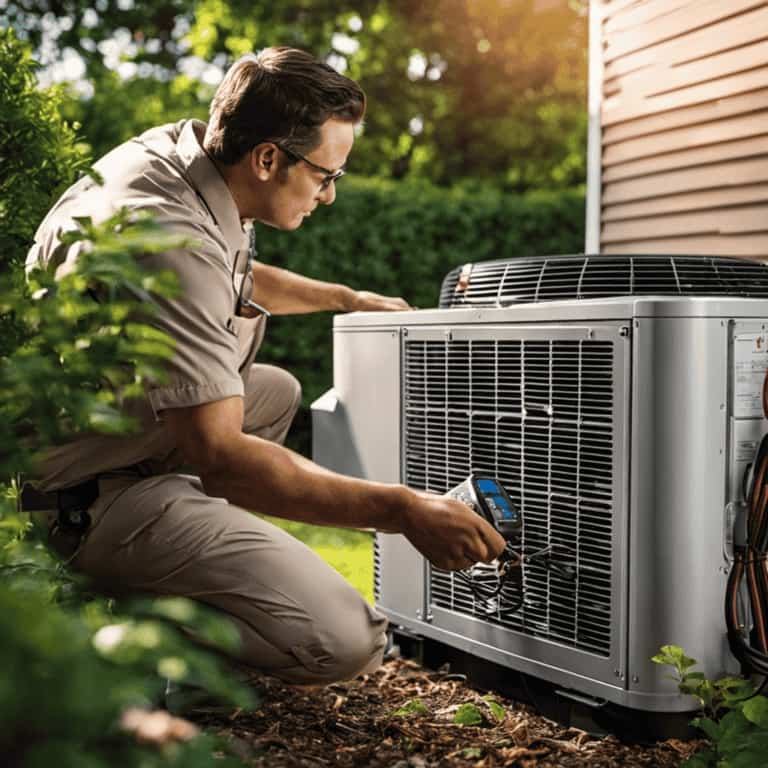
Key Takeaways
- Regular maintenance maximizes performance and efficiency of geothermal heat pumps.
- Scheduling regular inspections and tune-ups is important for preventing potential issues and addressing minor problems.
- Maintenance saves money on costly repairs and extends the lifespan of the equipment.
- Focusing on key components such as filters, coils, and lubrication ensures optimal performance and reduces the risk of component failure.
The Importance of Regular Maintenance for Geothermal Heat Pumps
Regular maintenance is crucial for maximizing the performance of our geothermal heat pumps. Taking care of our systems ensures that they continue to operate efficiently and provide the comfort and energy savings we desire.
By regularly maintaining our geothermal heat pumps, we can prevent potential issues from arising and address any minor problems before they become major ones. This not only saves us money on costly repairs but also extends the lifespan of our equipment.
It’s important to schedule regular inspections and tune-ups to keep our geothermal heat pumps running at their best.
In the next section, we’ll discuss the key components to focus on during geothermal heat pump maintenance, which will further enhance the performance and longevity of our systems.

Key Components to Focus on During Geothermal Heat Pump Maintenance
When it comes to geothermal heat pump maintenance, there are key components that we need to focus on to ensure optimal performance.
First and foremost, we must emphasize the importance of regularly cleaning the filters to maintain their cleanliness and efficiency.
Additionally, regular coil cleaning is essential to prevent dirt and debris buildup that can hinder heat transfer.
Lastly, lubrication shouldn’t be overlooked, as it ensures smooth operation and minimizes wear and tear on the system.
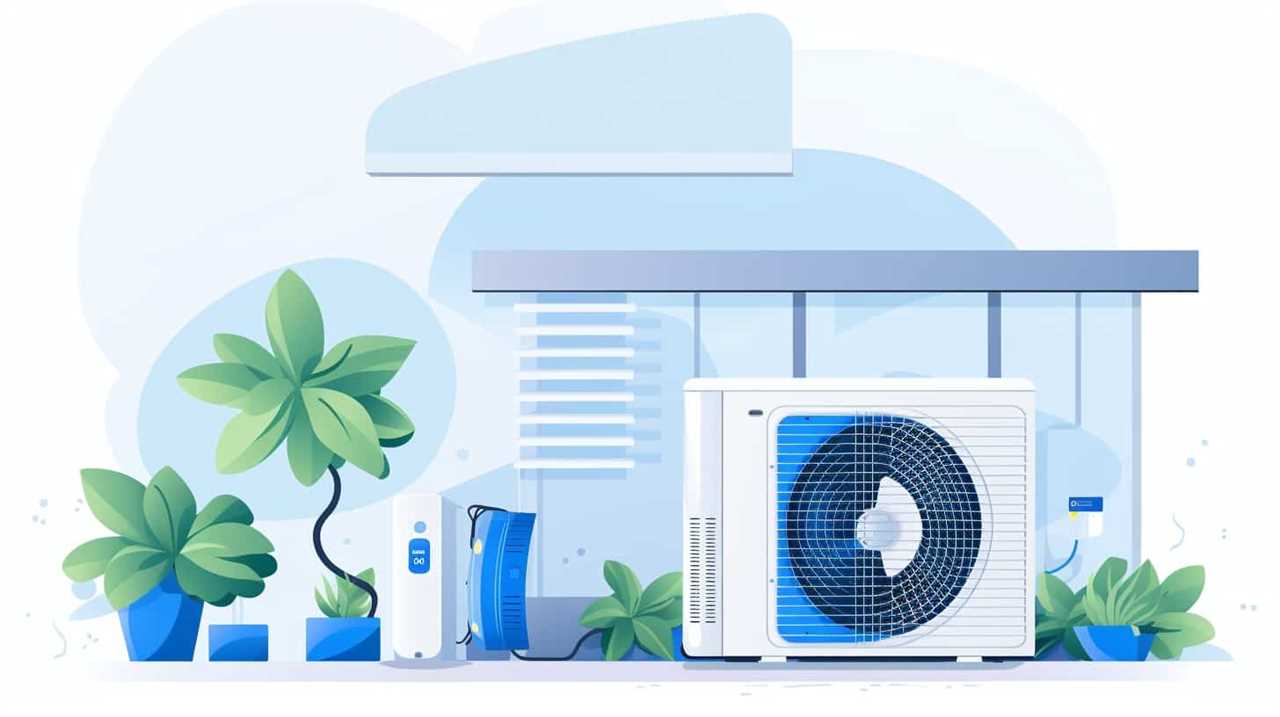
Filter Cleanliness Importance
We typically recommend checking and cleaning the filters of your geothermal heat pump at least once every three months to ensure optimal performance. The cleanliness of the filters is crucial for the efficient operation of your system. When filters become clogged with dirt, dust, and debris, they restrict airflow and reduce the heat pump’s ability to transfer heat effectively. This can lead to decreased efficiency, increased energy consumption, and potentially costly repairs. Regularly cleaning the filters not only helps maintain the performance of your geothermal heat pump but also improves indoor air quality by removing allergens and pollutants. Refer to the table below for a breakdown of the key components to focus on during geothermal heat pump maintenance.
| Component | Importance | Recommended Frequency |
|---|---|---|
| Filters | Crucial for efficiency and indoor air quality | Every 3 months |
| Coils | Essential for heat transfer | Annually |
| Blower | Vital for proper airflow and comfort | Annually |
Regular Coil Cleaning
To maintain optimal performance, it’s important to regularly clean the coils of our geothermal heat pump. Neglecting this maintenance task can lead to reduced efficiency and increased energy consumption.
Here are some key components to focus on during geothermal heat pump maintenance:
-
Evaporator Coil: This coil absorbs heat from the surrounding air or ground and can become clogged with dirt and debris over time.

-
Condenser Coil: This coil releases heat into the air or ground and can also accumulate dirt and debris, hindering its ability to transfer heat effectively.
-
Coils Fins: These thin metal strips help increase the surface area for heat transfer. Cleaning them ensures optimal heat exchange.
-
Drain Pan: This pan collects condensate and can become clogged, leading to water leakage and potential damage.
-
Refrigerant Lines: These lines carry the refrigerant and should be inspected for leaks or damage.
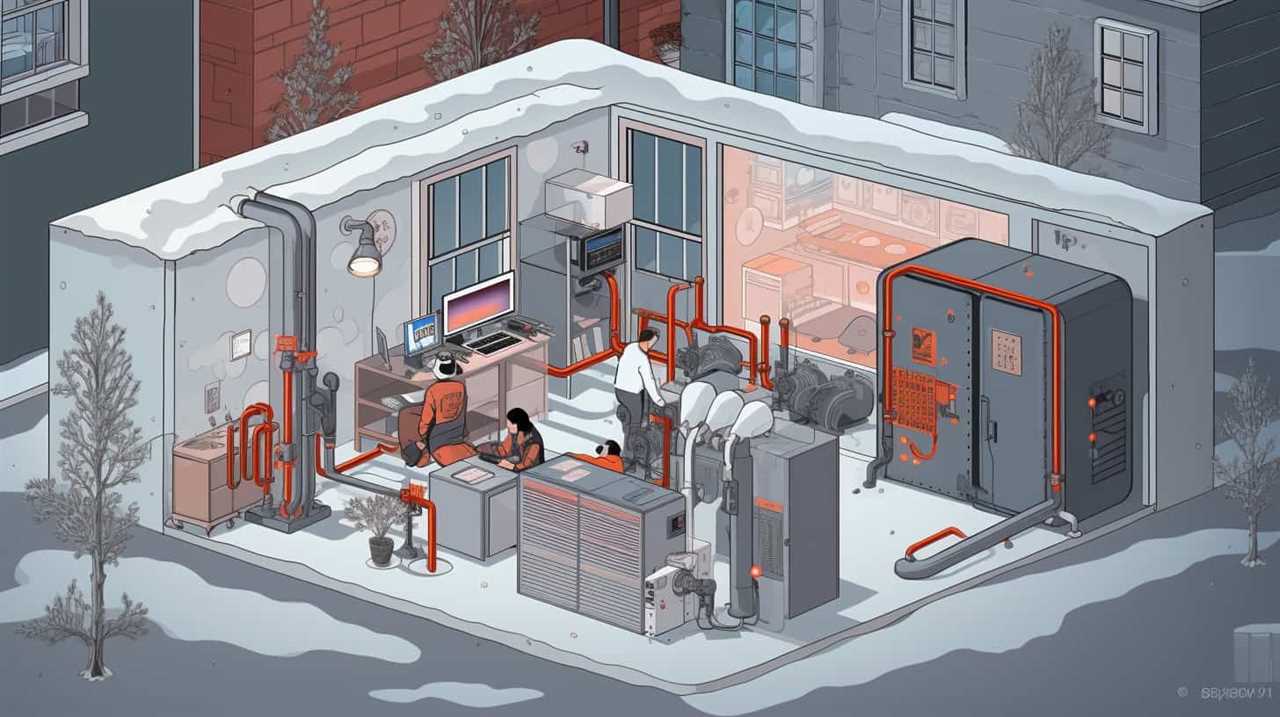
Regularly cleaning these key components will help ensure our geothermal heat pump operates efficiently and effectively.
Lubrication for Smooth Operation
One important aspect of geothermal heat pump maintenance is lubricating key components for smooth operation. Proper lubrication ensures that the system operates efficiently and reduces the risk of component failure. To help you understand which components require lubrication, we have provided a table below:
| Key Components | Lubrication Frequency |
|---|---|
| Blower Motor | Annually |
| Fan Motor | Annually |
| Compressor | Every 2-3 years |
| Circulating Pump | Annually |
How to Clean and Maintain the Heat Exchanger for Optimal Performance
Regularly cleaning and maintaining the heat exchanger is crucial for achieving optimal performance of our geothermal heat pump system. Here are some important steps to follow:
- Inspect regularly: Regularly check the heat exchanger for any signs of dirt or debris buildup.
- Clean gently: Use a soft brush or cloth to gently remove any dirt or debris from the heat exchanger.
- Avoid harsh chemicals: Avoid using harsh chemicals or abrasive materials that could damage the heat exchanger.
- Clear the surrounding area: Make sure there are no obstructions around the heat exchanger that could restrict airflow.
- Schedule professional maintenance: It’s important to have a professional technician perform a thorough inspection and cleaning of the heat exchanger on a regular basis.
Tips for Ensuring Proper Insulation and Ductwork in Geothermal Heat Pump Systems
With proper insulation and well-maintained ductwork, we can maximize the performance of our geothermal heat pump system.
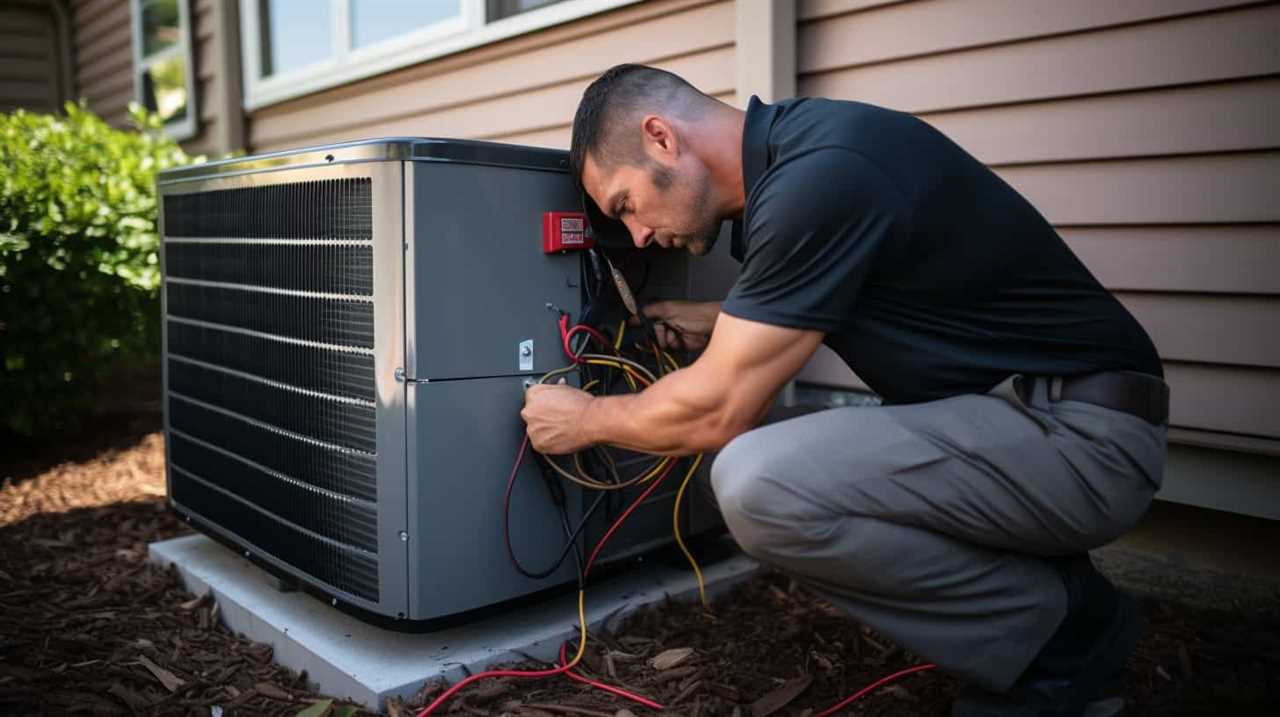
Insulation plays a crucial role in ensuring that the heat produced by the system is efficiently distributed throughout our home. By properly insulating our walls, floors, and ceilings, we can prevent heat loss and maintain a comfortable indoor temperature.
Additionally, well-maintained ductwork ensures that the heated or cooled air is delivered effectively to each room. It’s important to regularly inspect and seal any leaks or gaps in the ducts to prevent energy waste.
By addressing insulation and ductwork issues, we can optimize the efficiency and effectiveness of our geothermal heat pump system.
Now, let’s explore common issues to watch out for and troubleshooting tips for geothermal heat pumps.
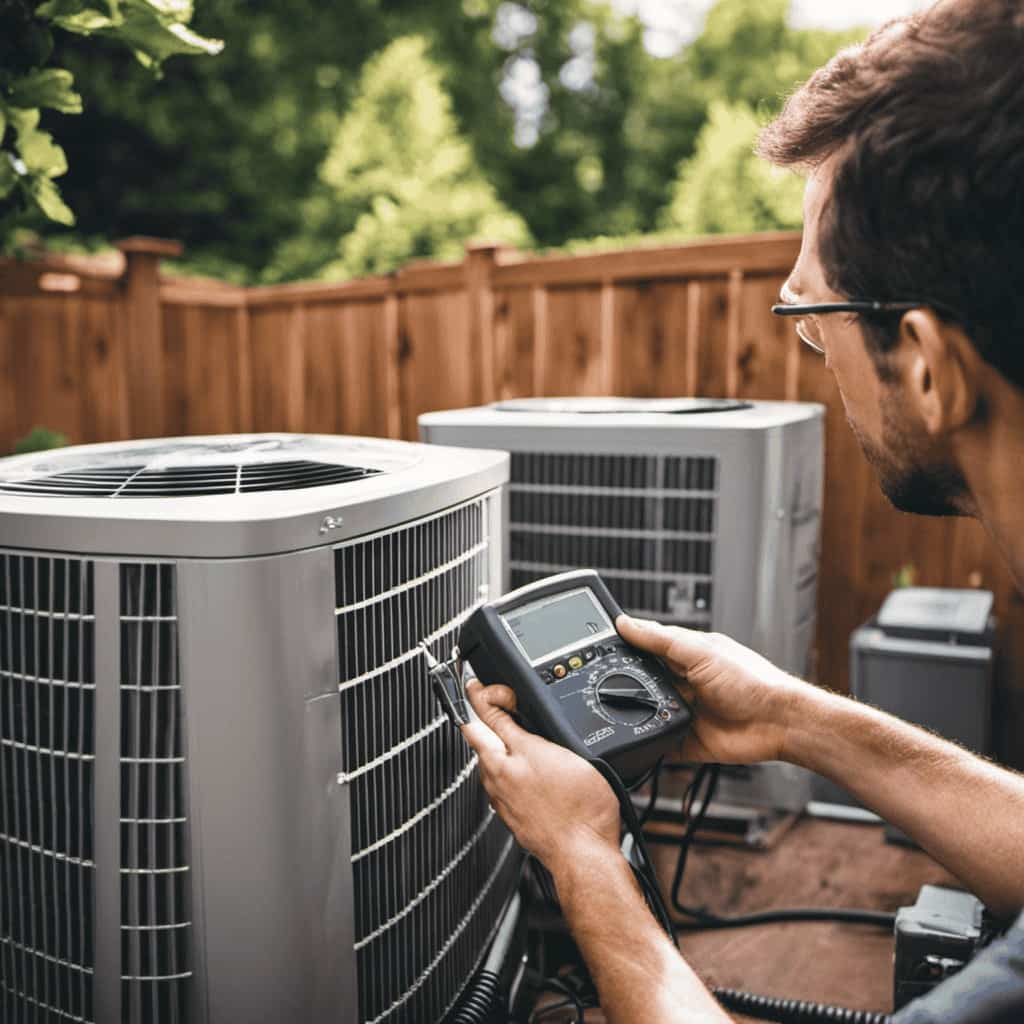
Common Issues to Watch Out for and Troubleshooting Tips for Geothermal Heat Pumps
Now let’s focus on common issues and troubleshooting tips for geothermal heat pumps.
As homeowners, we need to be aware of potential problems that can arise and know how to address them.
Maintenance Best Practices
When maintaining geothermal heat pumps, it’s important to be aware of common issues and troubleshoot them effectively to maximize performance. Here are some maintenance best practices to keep in mind:
-
Regular filter cleaning: Dirty filters can restrict airflow and decrease efficiency. Clean or replace filters every few months to ensure proper airflow and optimal performance.
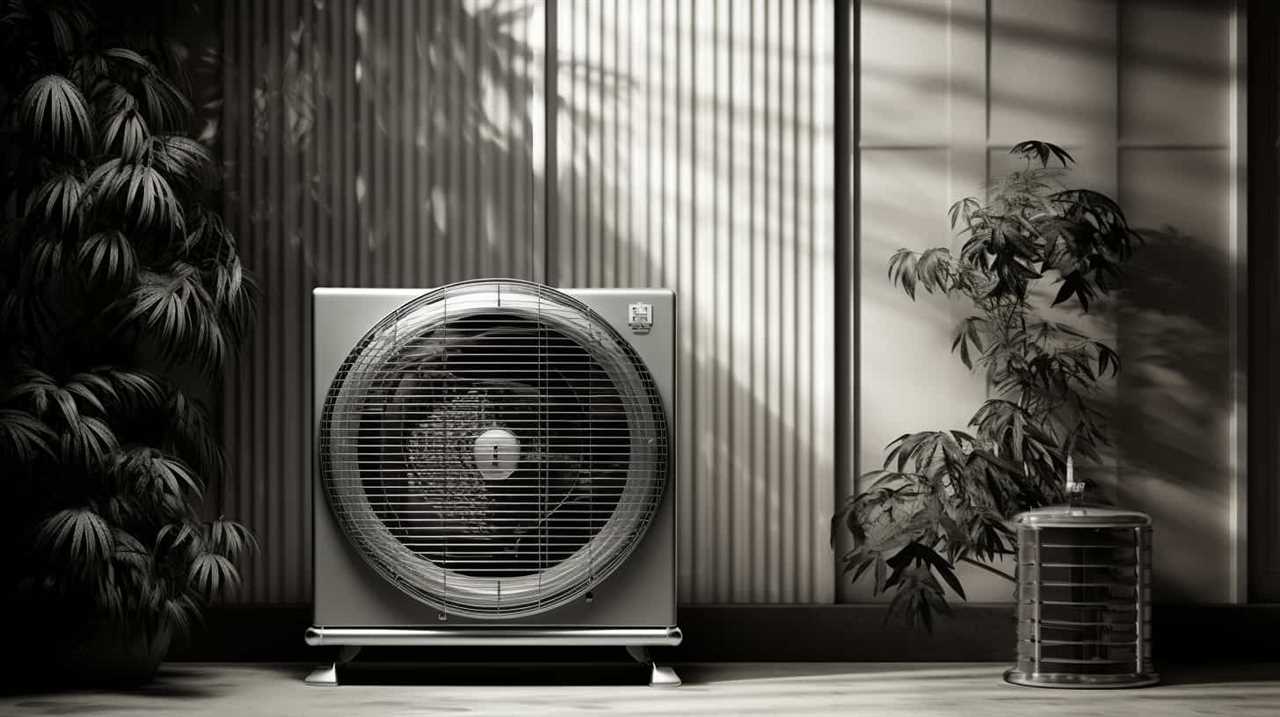
-
Inspecting the heat exchanger: Regularly check the heat exchanger for any signs of corrosion or leaks. Addressing these issues promptly can prevent major damage and costly repairs.
-
Monitoring refrigerant levels: Low refrigerant levels can reduce system efficiency. Regularly check and recharge refrigerant levels as needed to ensure optimal performance.
-
Cleaning the condenser: The condenser coil can accumulate dirt and debris, hindering heat transfer. Regularly clean the condenser coil to maintain efficient heat exchange.
-
Checking electrical connections: Loose or faulty electrical connections can lead to system malfunctions. Regularly inspect and tighten electrical connections to ensure safe and reliable operation.

Troubleshooting Common Problems
We frequently encounter common issues with geothermal heat pumps, but by following troubleshooting tips, we can effectively resolve them and ensure optimal performance. Here are some common problems you may encounter with your geothermal heat pump and some tips on how to troubleshoot them:
| Common Problem | Possible Causes | Troubleshooting Tips |
|---|---|---|
| Low heating or cooling output | Insufficient refrigerant, air or water flow blockage | Check refrigerant levels, clean air filters, check for blockages in the water loop |
| High energy consumption | Improper thermostat settings, dirty coils | Adjust thermostat settings, clean coils regularly |
| Noisy operation | Loose components, air or water flow issues | Tighten loose components, check for air or water flow restrictions |
The Benefits of Professional Maintenance and Annual Check-ups for Geothermal Heat Pumps
Regular professional maintenance and annual check-ups provide numerous benefits for geothermal heat pumps. Here are some reasons why you should consider investing in these services:
-
Improved Efficiency: Professional maintenance ensures that your heat pump operates at its optimal efficiency, reducing energy consumption and saving you money on utility bills.
-
Extended Lifespan: Regular check-ups help identify and address potential issues before they become major problems, prolonging the lifespan of your heat pump.
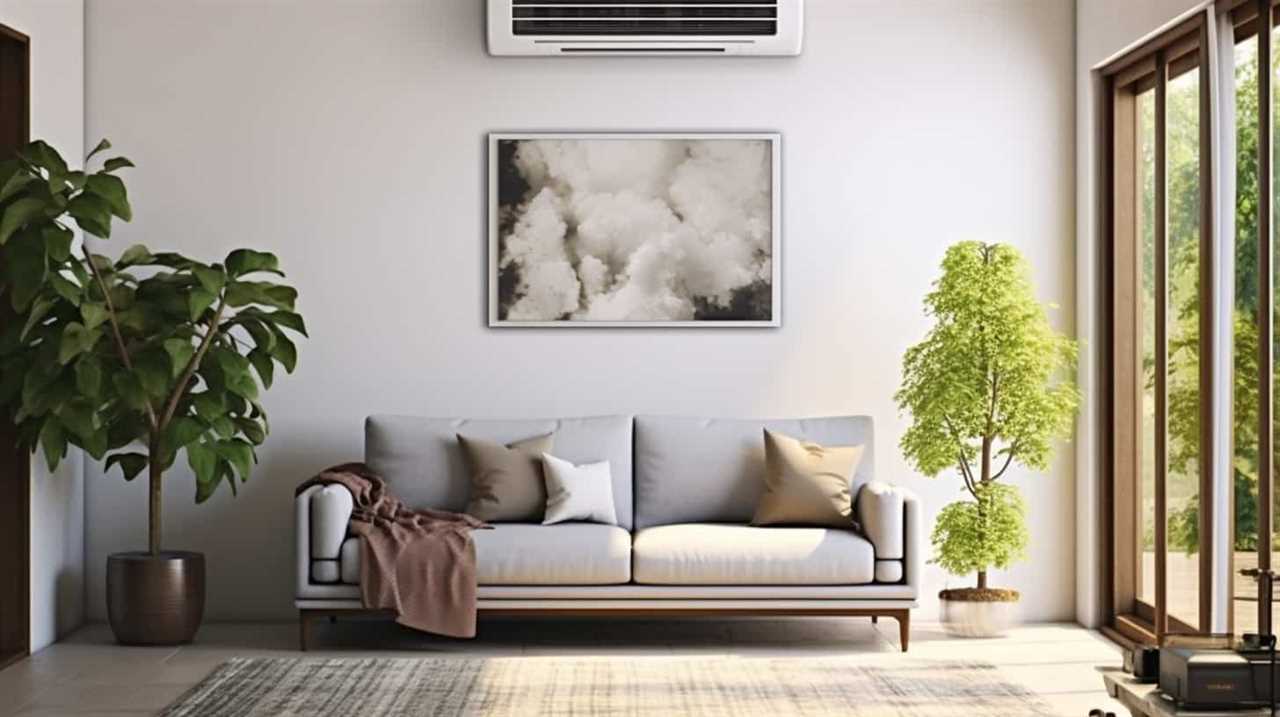
-
Enhanced Performance: Professional technicians can fine-tune your heat pump to maximize its performance, providing you with consistent and reliable heating and cooling.
-
Preventive Measures: Routine maintenance helps prevent costly breakdowns and repairs, giving you peace of mind and avoiding unexpected expenses.
-
Safety Assurance: Professional inspections ensure that your heat pump operates safely, minimizing the risk of carbon monoxide leaks and other hazards.
Frequently Asked Questions
How Often Should Routine Maintenance Be Performed on a Geothermal Heat Pump System?
We recommend performing routine maintenance on a geothermal heat pump system at regular intervals. It is crucial to ensure optimal performance and efficiency. Regular maintenance helps prevent potential issues and extends the lifespan of the system.

What Are the Signs That Indicate a Geothermal Heat Pump System May Need Maintenance?
We should be aware of signs indicating the need for maintenance in a geothermal heat pump system. By noticing these signs, we can ensure optimal performance and prevent potential issues in the future.
Can Routine Maintenance Help Improve the Energy Efficiency of a Geothermal Heat Pump System?
Can routine maintenance improve the energy efficiency of our geothermal heat pump system? Yes, routine maintenance ensures optimal performance, maximizing energy efficiency and saving us money in the long run.
Are There Any Specific Safety Measures That Should Be Taken During Geothermal Heat Pump Maintenance?
During geothermal heat pump maintenance, it is important to take specific safety measures to ensure the well-being of our system and ourselves. These measures help prevent accidents and improve overall maintenance effectiveness.
Is It Possible to Perform Routine Maintenance on a Geothermal Heat Pump System Without Professional Assistance?
Yes, routine maintenance on a geothermal heat pump system can be performed without professional assistance. However, it is important to have some knowledge and follow safety measures to ensure proper functioning and maximize performance.

Conclusion
In conclusion, routine maintenance is the key to unlocking the full potential of geothermal heat pumps. Just like tending to a delicate garden, taking care of the key components, cleaning the heat exchanger, ensuring proper insulation and ductwork, and addressing common issues promptly can lead to optimal performance.
Think of your geothermal heat pump as a trusted ally, and with regular check-ups from professionals, you can enjoy its benefits for years to come, like a flourishing oasis in the desert of energy consumption.








